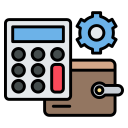Chosen theme: Free vs Paid Budget Tracking Apps. Explore real-world trade-offs, honest stories, and practical steps to decide whether a free tool or a paid subscription will actually help you budget better. Join in, comment, and subscribe for more money-smart insights.
What You Really Get For Free
Most free budget tracking apps give you categories, manual transaction entry, basic charts, and spending alerts. That foundation is enough to reveal patterns, curb impulse purchases, and create accountability. It also helps you learn what features you truly value before paying.
Why People Pay: Subscriptions and Value
Automation and Bank Sync
Paid budgeting apps often include robust bank syncing, faster categorization, rules, and multi-account reconciliation. When transactions just appear and auto-categorize, you save hours each month. That time can be redirected toward planning, debt strategies, and meaningful financial conversations at home.
Premium Support and Security
Subscriptions can fund dedicated support, quicker bug fixes, and transparent security investments. Expect stronger data encryption, permission controls, and documented privacy practices. When money stress peaks, getting timely human help matters. That peace of mind is part of what subscribers actually purchase.
A Freelancer’s Upgrade Story
One reader switched from a free app to a paid option after missing invoice reimbursements due to manual tracking gaps. With automated imports and tags, they spotted patterns and tightened cash flow. The subscription felt justified within two billing cycles. Has this happened to you?
Free apps may rely more on aggregated usage data or affiliate partnerships, while paid tools often minimize advertising incentives. Read privacy pages closely. Look for clear language on data selling, anonymization, and retention. Your comfort with these practices should influence your choice.
Privacy, Data, and Trust
Some paid and free apps let you disable sync, use local backups, or import CSVs without linking banks. On-device control reduces exposure while keeping your workflow functional. If privacy is paramount, consider manual entry and encrypted exports to keep sensitive details contained.
Privacy, Data, and Trust
Feature-by-Feature Showdown
Do you prefer zero-based budgeting, envelopes, or the 50/30/20 rule? Many paid apps offer method-specific workflows and goals. Some free apps allow flexible categories but fewer advanced rules. Match your core method to the app’s strongest design, not the loudest marketing.

Cost Math: Is Paid Worth It?
If a $79 annual subscription helps you avoid one overdraft fee, capture a forgotten reimbursement, and curb $15 monthly impulse spending, you are ahead. Put numbers to your habits. Then ask whether the tool actually changed your behavior consistently.
If automation saves 90 minutes monthly and your time is worth $20 per hour, that is $360 in annual value. Paid apps often win here. But if you enjoy manual tracking, a focused free app might be just right.
Use free trials to pressure-test features with your real accounts. Set a reminder to review before renewal. Many paid tools allow downgrades or refunds. Experiment deliberately, then commit. Share your trial takeaways in the comments to help others decide confidently.

Choosing Your Path Today
Start with a free budget tracking app. Enter transactions for two weeks, keep five to seven categories, and notice where money leaks. When you feel friction or need automation, test a paid option. Subscribe to follow our weekly onboarding tips.
Choosing Your Path Today
Try a paid app with rules, bank sync, and shared access for accountability. Set one meaningful goal, like eliminating overdrafts. Measure results after 60 days. Comment with your top bottleneck so we can suggest targeted workflows next week.


